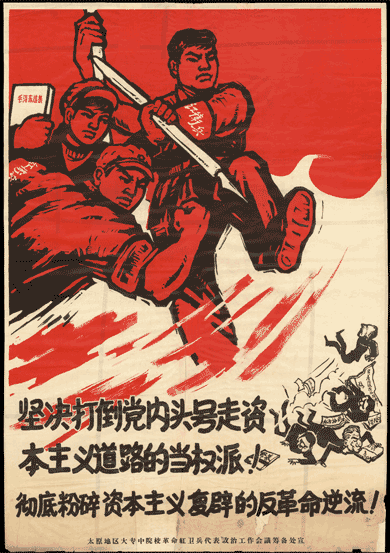My latest column at The American Prospect:
 Sidney Rittenberg’s face fills the screen in a college auditorium where The Revolutionary is being shown. His eyebrows are bold brushstrokes of white above narrowed, intent eyes. His lips are firm. He has the wrinkles and gnarled neck of an old man. He does not, however, look like a man who is 90 years old, or like one battered by spending 16 of those years in solitary confinement in China for the offense, ultimately, of believing too deeply in the Party and the revolution. “If you put one drop into the long river of human history, that’s immortal … You either make a difference or you don’t make a difference,” Rittenberg says to the camera in his Southern gentleman’s drawl. This is his credo. Outside the auditorium windows, night has fallen. Rittenberg’s larger-than-life face is reflected, translucent, in the glass, as if his memory were speaking out of the darkness. “History,” he says wryly, “rolled right over me.”
Sidney Rittenberg’s face fills the screen in a college auditorium where The Revolutionary is being shown. His eyebrows are bold brushstrokes of white above narrowed, intent eyes. His lips are firm. He has the wrinkles and gnarled neck of an old man. He does not, however, look like a man who is 90 years old, or like one battered by spending 16 of those years in solitary confinement in China for the offense, ultimately, of believing too deeply in the Party and the revolution. “If you put one drop into the long river of human history, that’s immortal … You either make a difference or you don’t make a difference,” Rittenberg says to the camera in his Southern gentleman’s drawl. This is his credo. Outside the auditorium windows, night has fallen. Rittenberg’s larger-than-life face is reflected, translucent, in the glass, as if his memory were speaking out of the darkness. “History,” he says wryly, “rolled right over me.”
The Revolutionary, recently released, is Sidney Rittenberg’s personal history, which is tangled up with the history of several hundred million other people who lived through—or didn’t live through—the Mao era. What makes him unusual is that he is an American who reached a position of national power, and who survived to tell about China’s convulsions from the inside. He is sometimes reflective and regretful; often the regrets are on too small a scale for the events. That gap is part of what makes this a remarkable and disturbing film.
I should also note that as film, it is also unpolished. Rittenberg, speaking, is nearly the only active image we see. The only other voice is that of off-screen interviewer and narrator Irv Drasnin. There’s no historical footage. By duress or aesthetic choice, the producers have instead interspersed still photos and propaganda posters. But Rittenberg’s story would be riveting without any visuals at all. And the posters add another dose of unease. The images of young men and women who represent the Cultural Revolution—drawn as if the artist were looking up at giants—are often scowling, angry, and absurdly muscular. They are joyous when marching in a vast line, led by a man carrying an icon of Mao Zedong and another with an assault rifle. The images glorify power, struggle, and the Leader. It is fascist art.
Rittenberg, son of an affluent Charleston family, became a labor organizer and communist as a 19-year-old college student. He knew very little, he says, of revolution or Russia. He did know that in the South, communists were the people dedicated to racial equality. During World War II, the U.S. Army sent him for language training and then to China. He chose to be discharged there, and walked for 45 days to rebel headquarters in the city of Yan’an. The first day there, he recounts, he met Mao. “It was like a picture right out of history,” he says, “and underneath that was the feeling, ‘I’m now part of history.'”
He became a Chinese Communist Party member, and took charge of the C.P.’s English broadcasting, he recounts. Then, in 1949, just as the revolutionary forces entered Beijing, he was imprisoned. He blames his arrest on Stalin’s paranoia and influence, and credits his release six years later to Stalin’s death. This explanation leaves out his Chinese comrades, and apparently allowed Rittenberg to keep believing that he was serving progress. He returned to what was now Radio Beijing. As a foreign expert, living comfortably in the capital with his new wife, he did not know that Mao’s Great Leap Forward was a jump into disaster. “I thought it was working,” he says. He was not alone; the system manufactured deception. Peasants spent their time trying to make steel in backyard furnaces, crops failed, and frightened officials in the countryside reported fantastic success. Tens of millions of people died of hunger.
The failure weakened Mao’s authority, Rittenberg recounts. The leader’s answer was the Cultural Revolution. …
Read the rest here.





